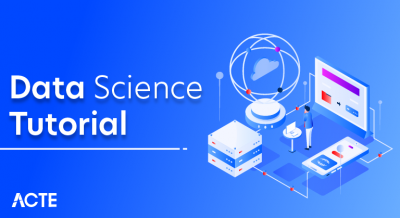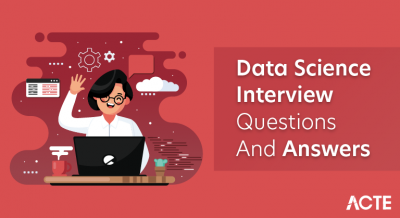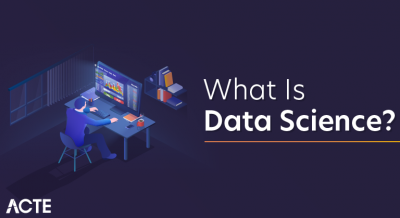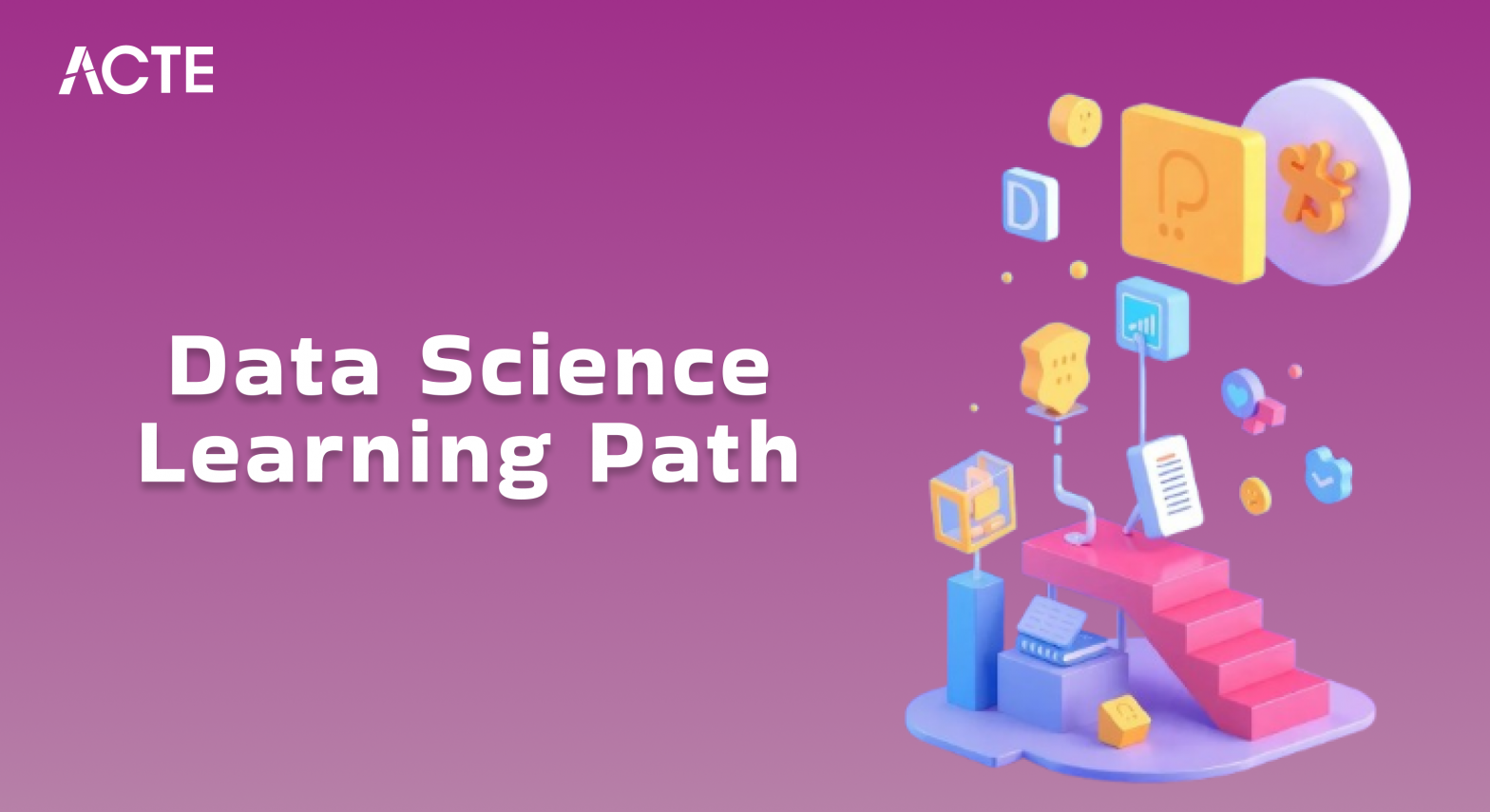
- Introduction to Data Science Learning Path
- Prerequisites for Learning Data Science
- Programming Languages for Data Science
- Data Analysis and Visualization
- Machine Learning Fundamentals
- Data Wrangling and Cleaning Techniques
- Statistics and Probability in Data Science
- Model Evaluation and Tuning
- Tools and Technologies Used in Data Science
- Real-World Data Science Projects
- Certification and Course Recommendations
- Career Opportunities in Data Science
Introduction to Data Science Learning Path
Data science is a rapidly growing field that combines multiple disciplines such as statistics, machine learning, programming, and data analysis to extract meaningful insights from vast amounts of data. As the volume of data continues to increase, businesses and organizations are looking for experts who can utilize this data to make informed, strategic decisions. This rising demand has led to an increased focus on the skills and knowledge required to succeed in the field. While mastering data science may seem overwhelming at first, breaking it down into clear, manageable stages of learning can help make the journey more structured and effective. For individuals just starting out or for professionals seeking to specialize in this area, there is a clear path to follow. One important aspect of this journey is engaging in Data Science Training which helps you build a strong foundation in key areas such as understanding data types, basic statistics, and the principles of machine learning. As you advance, you will dive deeper into more complex techniques, including advanced machine learning algorithms, data visualization, and big data technologies. The right tools are essential, and gaining proficiency in programming languages like Python and R, as well as mastering data manipulation libraries and machine learning frameworks, will significantly enhance your ability to analyze and interpret data. Whether you are new to data science or looking to specialize, following a structured learning path that builds from core principles to cutting-edge techniques will equip you with the knowledge and skills needed to succeed in this dynamic field.
Would You Like to Know More About Data Science? Sign Up For Our Data Science Course Training Now!
Prerequisites for Learning Data Science
Before diving into the complexities of data science, it’s important to have a foundational understanding of several key areas. These prerequisites will set the stage for learning and help ensure that you can progress smoothly through the various stages of the learning path.
- Mathematics and Statistics: A strong grasp of basic mathematics, especially linear algebra, calculus, and probability, is essential for understanding how algorithms work, model evaluation, and data transformation.
- Basic Programming: Python and R are the primary programming languages used in data science. Having a good understanding of programming fundamentals such as loops, functions, data structures, and object-oriented programming is crucial. For more detailed insights, Understanding Data Science and Data Analytics can provide comprehensive knowledge to enhance your programming skills in the context of data analysis.
- Basic Computer Science Knowledge: Concepts like algorithms, data structures, and time complexity will help you write more efficient code for large-scale data processing.
- Data Management: An understanding of databases, including relational databases like SQL, and NoSQL databases, is important when working with large datasets stored in different formats.
- Software Development Practices: Familiarity with version control systems like Git, testing practices, and working with virtual environments will ensure smooth collaboration and workflow management in real-world projects.
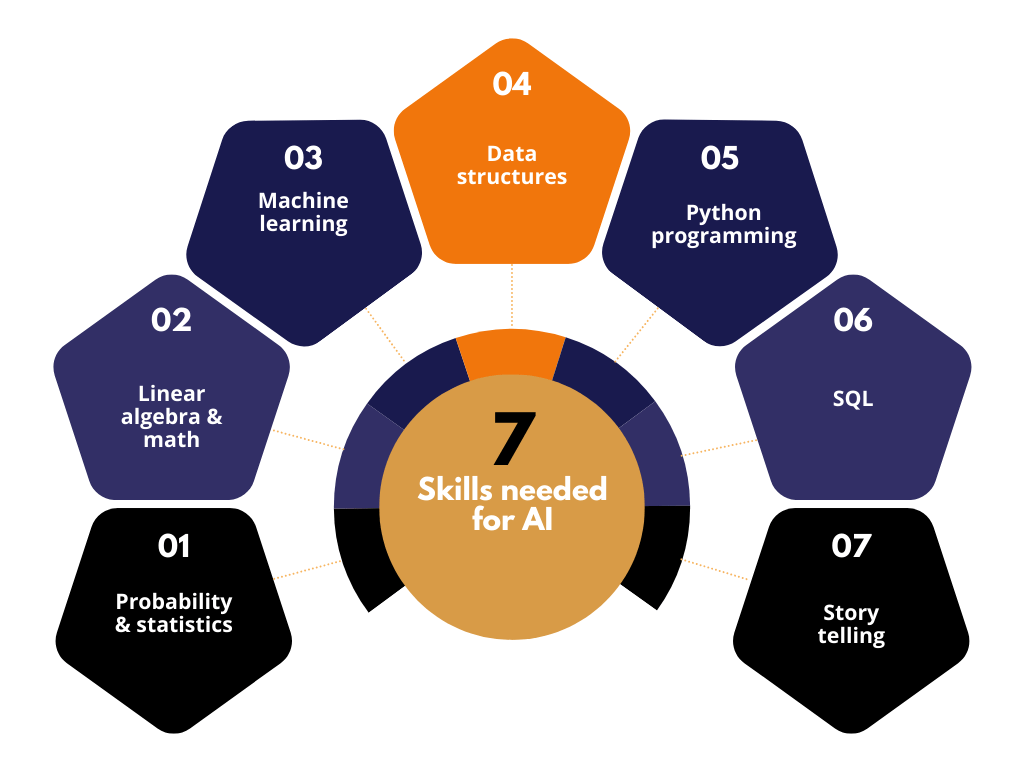
Programming Languages for Data Science
Data science heavily relies on a range of programming languages to perform various tasks, with Python and R being the most prominent among them, although others like SQL, Julia, and Scala are also employed depending on specific project needs. Python stands out as the preferred language for most data science professionals due to its straightforward syntax and robust versatility, offering powerful libraries such as NumPy, Pandas, Matplotlib, Seaborn, and Scikit-learn that streamline data manipulation, visualization, and machine learning processes. Its extensive ecosystem allows seamless application across a wide array of data science functions. On the other hand, R is particularly favored in statistical analysis and data visualization, especially within academic and research settings, supported by specialized packages like ggplot2 for high-quality visualizations, dplyr for efficient data wrangling, and caret for machine learning applications. Understanding categorical variables and What is Nominal Data is an important concept to understand, especially when working with categorical data. SQL plays a crucial role in handling data housed within relational databases, making it an indispensable tool for querying, retrieving, and modifying data in nearly all data-driven projects. While not as mainstream as Python or R, other programming languages such as Scala and Julia are increasingly being adopted in niche areas of data science. Scala offers scalability and performance benefits in big data environments, whereas Julia is recognized for its impressive speed in executing numerical computations, making it an attractive option for high-performance tasks. Collectively, the choice of programming language in data science is guided by the specific nature of the task, the scale of the data, and the desired outcome, with each language offering distinct strengths that contribute to a data scientist’s toolkit.
Data Analysis and Visualization
Data analysis and visualization are core components of data science. The goal is to explore, analyze, and represent data in a meaningful way to uncover trends, patterns, and insights.
- Exploratory Data Analysis (EDA): EDA is the process of analyzing datasets to summarize their main characteristics and visualize them. Tools like Pandas (Python) and dplyr (R) are used to manipulate data, while libraries like Matplotlib, Seaborn, and ggplot2 help create visualizations.
- Data Visualization: Visualization techniques are crucial for communicating insights. Bar charts, histograms, scatter plots, and heatmaps are some common types of visualizations used to represent data and identify trends. Effective visualization ensures that stakeholders can understand complex data without needing to dive into the numbers themselves.
- Data Cleaning: Often, raw data is messy, incomplete, or inconsistent. Data cleaning involves removing duplicates, handling missing values, normalizing data, and addressing outliers. Tools like Pandas and R’s tidyr package are commonly used for this process.
Do You Want to Learn More About Data Science? Get Info From Our Data Science Course Training Today!
Machine Learning Fundamentals
Machine learning is a vital component of data science that empowers systems to identify patterns within data and make informed predictions or decisions based on those patterns, encompassing several foundational concepts that are essential to understand. Supervised learning is one such concept where a model is trained on labeled datasets, meaning both inputs and outputs are known during training; this category includes popular algorithms like linear regression, logistic regression, decision trees, support vector machines (SVM), and k-nearest neighbors (KNN), each designed to map inputs to desired outcomes. In contrast, unsupervised learning involves working with data that lacks labeled outputs, requiring algorithms to independently uncover hidden patterns or groupings; common approaches here include clustering methods like k-means and dimensionality reduction techniques such as Principal Component Analysis (PCA). Another significant branch is reinforcement learning, which focuses on training agents to make a series of decisions by interacting with an environment and receiving feedback in the form of rewards or penalties; this method is particularly prominent in areas like robotics, gaming, and autonomous systems where adaptive behavior over time is crucial. Artificial Intelligence in Banking is an exciting application of AI and machine learning in the financial sector. Equally important is the evaluation of machine learning models, as it determines how well a model performs and generalizes to new data. Key performance metrics include accuracy, precision, recall, F1-score, and the area under the curve (AUC), each offering insight into various aspects of a model’s predictive capabilities, helping data scientists fine-tune algorithms and ensure they are both reliable and effective in real-world applications.
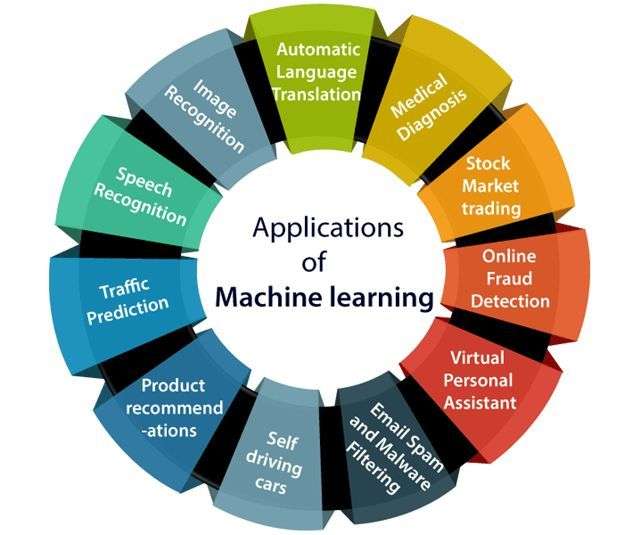
Data Wrangling and Cleaning Techniques
Data wrangling refers to the process of transforming raw data into a format suitable for analysis. Cleaning data is one of the most time-consuming tasks in data science, but it’s essential for building accurate models.
- Handling Missing Data: Missing data can be handled through techniques like imputation (replacing missing values with estimates) or by removing rows or columns with missing values.
- Outlier Detection: Outliers can significantly skew data, leading to incorrect results. Techniques such as z-scores, box plots, and IQR methods are used to identify and handle outliers.
- Data Transformation: Data often needs to be scaled or normalized before being fed into machine learning models. Techniques such as Min-Max scaling, Z-score normalization, and log transformations can be used.
- Feature Engineering: Creating new features or modifying existing ones to improve model performance is a critical skill. Feature engineering might involve encoding categorical variables, handling date-time data, or aggregating features.
Statistics and Probability in Data Science
A solid grasp of statistics and probability is a cornerstone of data science, underpinning many of the analytical methods and machine learning algorithms used to derive insights from data. Descriptive statistics serve as the foundation for summarizing data, utilizing key measures such as mean, median, mode, variance, and standard deviation to convey essential characteristics and distributions within a dataset. Inferential statistics extend this analysis by enabling data scientists to make broader generalizations about a population based on sample data, employing techniques like hypothesis testing, confidence intervals, and p-values to support evidence-based conclusions. Data Science Training can be a valuable resource to deepen your understanding of these concepts and provide practical applications. A deep understanding of probability is equally crucial, particularly in interpreting data and modeling uncertainty; this includes familiarity with various probability distributions such as normal, binomial, and Poisson, as well as fundamental principles like Bayes’ theorem that aid in making data-driven inferences and interpreting model predictions. Complementing these concepts, statistical testing methods such as t-tests, chi-square tests, and ANOVA are indispensable tools for determining whether observed differences between groups or variables are statistically significant, ensuring that conclusions drawn from data are both valid and reliable. Altogether, these statistical foundations are essential for effective data analysis and the successful application of machine learning models.
Want to Pursue a Data Science Master’s Degree? Enroll For Data Science Masters Course Today!
Model Evaluation and Tuning
Once a model is trained, evaluating its performance is critical. This phase also involves optimizing the model to achieve the best results.
- Cross-Validation: Cross-validation involves dividing the data into multiple subsets, training the model on some subsets, and testing it on others. This helps ensure that the model generalizes well to new, unseen data.
- Hyperparameter Tuning: Machine learning models often have hyperparameters that need to be tuned to achieve the best performance. Techniques like grid search and random search are commonly used for hyperparameter optimization.
- Bias-Variance Tradeoff: Understanding the bias-variance tradeoff is essential for selecting the right model and tuning it effectively. High bias leads to underfitting, while high variance leads to overfitting.
- Ensemble Methods: Combining multiple models to improve performance is another important technique. Methods like bagging, boosting, and stacking help reduce the risk of overfitting and increase accuracy.
- Predictive Analytics: Building a model to predict sales, stock prices, or customer churn based on historical data.
- Recommendation Systems: Creating a recommendation system for an e-commerce platform to suggest products based on user behavior.
- Natural Language Processing (NLP): Analyzing text data to build systems for sentiment analysis, chatbots, or document classification.
- Computer Vision: Developing models to identify objects in images or videos, such as facial recognition or autonomous vehicles.
- Data Scientist: Responsible for analyzing complex data, building predictive models, and generating actionable insights.
- Data Analyst: Focuses on interpreting data and creating reports, often working with business stakeholders to help make data-driven decisions.
- Machine Learning Engineer: Specializes in designing and deploying machine learning models in production environments.
- Data Engineer: Works on creating infrastructure for collecting, storing, and processing large datasets, often utilizing big data tools.
- AI Researcher: Focuses on developing new algorithms and techniques for artificial intelligence applications.
Tools and Technologies Used in Data Science
Data science relies on a diverse array of tools and technologies that enable efficient data handling, analysis, and model deployment, each playing a critical role in various stages of the data science workflow. Among the most essential are Python libraries such as Pandas, NumPy, Matplotlib, Seaborn, and Scikit-learn, which provide powerful capabilities for data manipulation, statistical analysis, visualization, and the development of machine learning models, making Python a dominant language in the field. Similarly, R offers a rich ecosystem tailored for statistical computing and graphical representation, with widely used libraries like ggplot2 for sophisticated visualizations, dplyr for data transformation, caret for machine learning, and Shiny for building interactive web applications. A fundamental part of statistical analysis involves understanding relationships between variables, such as What is Correlation in Statistics is fundamental when analyzing trends and dependencies within data. When working with large-scale data, big data tools such as Apache Hadoop, Spark, and Dask become indispensable, enabling distributed processing and analysis of massive datasets that exceed the limits of traditional computing environments. Cloud platforms, including Amazon Web Services (AWS), Google Cloud Platform (GCP), and Microsoft Azure, provide scalable solutions for data storage, computing power, and machine learning infrastructure, making it easier to manage and deploy data science projects cost-effectively and flexibly. Complementing these technologies is Jupyter Notebook, a widely adopted interface that allows users to create and share documents containing live code, interactive visualizations, equations, and narrative text, fostering collaboration and reproducibility in data analysis and model development. Collectively, these tools form the technological backbone of modern data science, equipping practitioners with the resources needed to tackle complex data challenges effectively.
Real-World Data Science Projects
Working on real-world data science projects is essential for building practical skills. Projects can vary widely in complexity and domain, but here are a few examples:
Certification and Courses Recommendations
To structure and formalize your data science education, pursuing certifications and online courses from well-regarded platforms can significantly enhance your knowledge and credibility in the field. Coursera stands out by offering a wide range of courses and certification programs developed by prestigious institutions such as Stanford University, IBM, and Google, covering subjects like Python programming, machine learning, and deep learning, catering to learners at various skill levels. Udemy provides a vast selection of cost-effective courses that span core data science topics, including Python, machine learning, and statistical analysis, making it accessible for those seeking flexible and affordable learning options. DataCamp specializes in interactive, hands-on training with a focus on data science skills using Python, R, and SQL, delivering a practical approach to mastering tools and techniques essential for real-world data analysis. In addition to data science concepts, understanding Data Engineering Tools is crucial for managing and preparing data pipelines effectively. Similarly, edX features professional certification programs from globally recognized universities such as MIT, Harvard, and UC Berkeley, offering in-depth study in areas such as artificial intelligence, machine learning, and data science, ideal for those looking to earn credentials from elite academic institutions. Though not a traditional certification provider, Kaggle serves as a highly valuable platform for experiential learning through data science competitions, challenges, and access to real-world datasets, allowing learners to apply their skills in practical scenarios and benchmark their performance against a global community. Collectively, these platforms provide a structured yet flexible pathway for acquiring, practicing, and validating the essential skills required to thrive in the field of data science.
Career Opportunities in Data Science
The demand for data scientists continues to rise across various industries. Some of the career opportunities in data science include:
In conclusion, data science is a dynamic and rewarding field that presents a wealth of career opportunities across diverse industries, from healthcare and finance to technology and retail. Its interdisciplinary nature, combining statistics, programming, and domain expertise, makes it both challenging and intellectually stimulating. As organizations increasingly rely on data-driven decision-making, the demand for skilled data scientists continues to grow. By adopting a structured learning approach starting with foundational concepts like statistics, probability, and programming and progressing to advanced topics such as machine learning, big data technologies, and data visualization, you can steadily develop the expertise needed to excel in this field. Data Science Training programs can provide the guidance and resources necessary for mastering these skills. Engaging with practical tools and platforms, participating in real-world projects, and pursuing recognized certifications further enhance your capabilities and employability. Continuous learning is key in a field that evolves rapidly with technological advancements. With commitment, curiosity, and persistence, you can not only become proficient in data science but also contribute significantly to solving complex problems, driving innovation, and delivering insights that create tangible value in the world around you.


